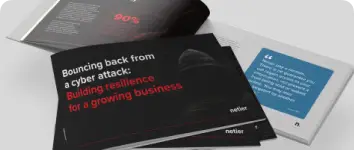
Malware, short for malicious software, refers to any intrusive software developed by cybercriminals to steal data and damage or destroy computers and computer systems. Examples of common malware include viruses, worms, Trojan viruses, spyware, adware, and ransomware.
Malware can be installed in a variety of ways, including through email attachments, drive-by downloads, or by clicking on links in malicious websites. It can also be installed through vulnerabilities in software that the user has installed on their computer.
Below are the top 4 most common ways malware is delivered and installed:
Phishing Emails
By far the most common method for hackers and state-sponsored hacking organizations to spread malware is through phishing emails. Cybercriminals have become incredibly skilled at crafting emails that trick people into clicking on links or downloading a file that contains malicious code.
The old phishing emails from that Nigerian prince who wants to share some of his fortune with you (for a small fee) have been replaced with very convincing emails that even replicate a company’s logo and branding. These phishing emails come in all shapes, sizes, and colors, but we want to highlight the one thing they all have in common: a sense of urgency.
One telltale of a phishing email is the sender’s email address. In most cases, the sender may seem legitimate, like “Microsoft-Support”, but the associated email address is something bogus, like JohnDoe@ MyDomainGotHacked.com. If you receive an email that you think is a Phishing email, report it to your IT security team so that they can evaluate it and block it.
Social Network Spam
Social network spam is a relatively new angle of attack for cybercriminals. When people browse social sites, looking at pictures or keeping up with old friends. They might not realise that the photo they are about to click on could actually be malware.
Examples of this include photos or videos shared on a social site that, when clicked, take the user to a fake YouTube page that then requests the user to download and install a video player plugin. Once the “Video Player” is installed, you still cannot watch the video. But the criminal might be watching you on your computer, with full access to your device. The lesson here is: think before you click or download!
Remote Desktop Protocol (RDP)
Remote Desktop Protocol (RDP) is a connection protocol that enables a user to connect to another computer over a network connection. Cybercriminals now use automation to scan the internet, looking for computers that are open to RDP. Then, they try to guess a username and password to gain access to the remote computer.
Other times, cybercriminals purchase the username and password from the Dark Web. Once they have access, they are free to do whatever they want, which can include installing malware.
Drive-By Downloads from a Compromised Website
What if I told you that there was a cyberattack method that could infect your computer with malware without any action on your part? That’s right, you wouldn’t even have to click on any links. Sounds scary, right? It most definitely is.
The average website is attacked 58 times per day in an attempt to infect it with malware. Once the site is infected, it will begin scanning the computer of anyone who visits the site, looking for vulnerabilities. These vulnerabilities can arise from out-of-date apps, missing operating-system patches or browser plugins. If a weakness is found, it is used to infect the computer with malware.
These are just a few examples of ways malware can spread through the internet and into your computer system. The good news is that with proper IT management, security best practices, multiple layers of defense, and end-user security awareness training, a company can reduce its risk of cyberattack. Vigilance is key to staying one step ahead of cybercriminals.
This time of year can be stressful; Your bank account doesn’t need the added stress of giving presents to scammer. Call Netier today to discuss how we can help manage security for you.




